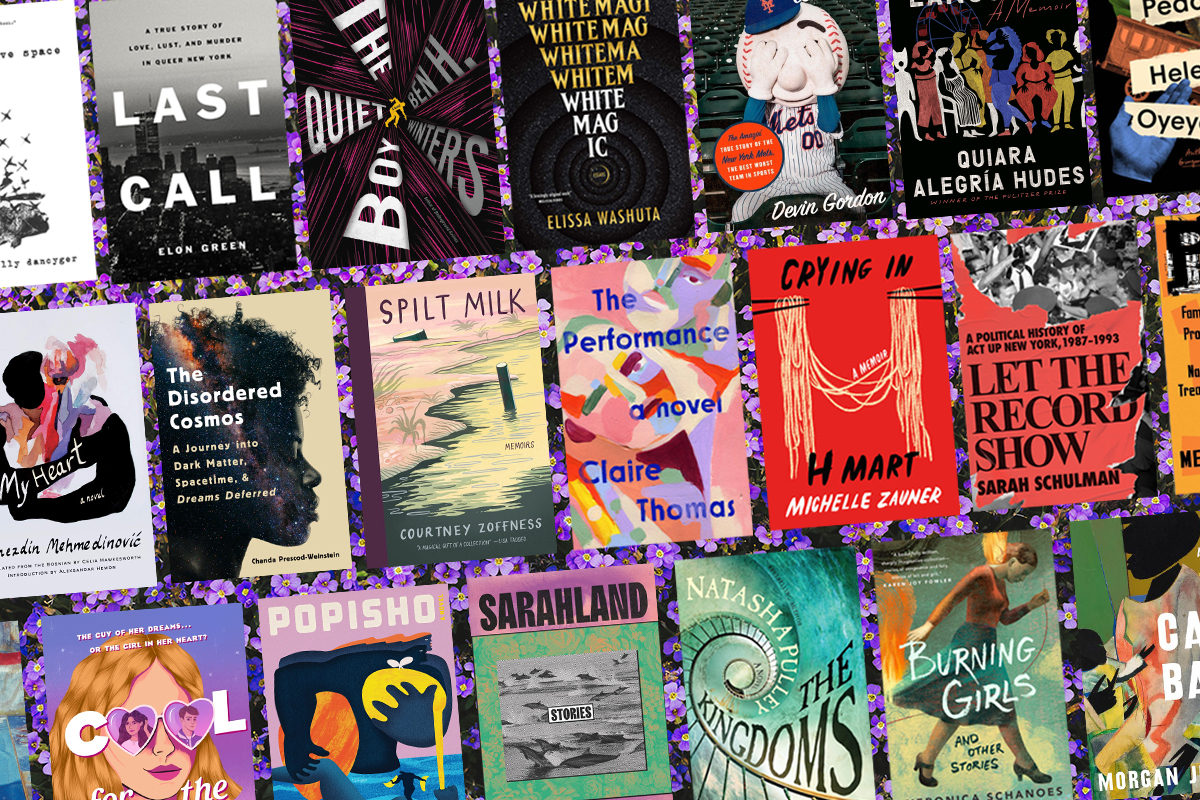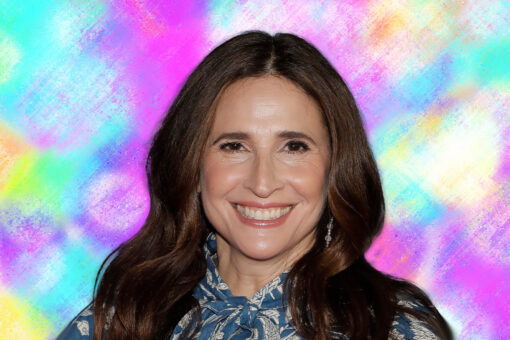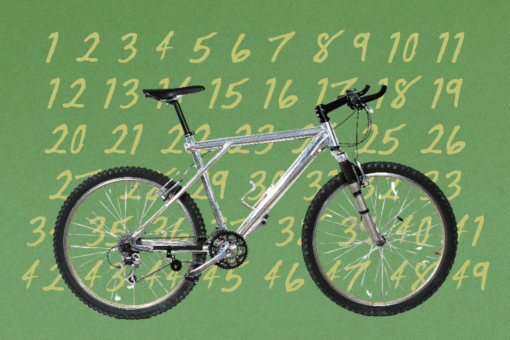The last books preview I wrote that was not overshadowed by the COVID-19 pandemic was Spring 2020. We are now a full year later, many, many book previews behind us, and it still feels like nothing and everything has changed. Thankfully, there are new books. There are always new books, and for that I am deeply grateful.
We’re doing things a little differently this time around: As we are a Jewish culture site, we know people come to us for recommendations on Jewish authors and Jewish-themed books. So, there’s a section for those Jew-ish books (emphasis on the “ish,” because what even is a Jewish book? Anything written by a Jewish author? Maybe!), and then there’s another section for books that we’re simply excited about.
This list is all shoppable on Bookshop, a platform supporting local bookstores. I’d also like to encourage you to support a local bookstore near you, as independent bookstores are really struggling right now. And, to support all the authors who are releasing books during the pandemic, preorders can make a huge difference (and then it’s like getting a surprise book you totally forgot you ordered several months later!).
Here our favorite books of March, April, and May 2021 (in no particular order)…
Jew-ish Books & Authors
1. Sarahland by Sam Cohen (March)
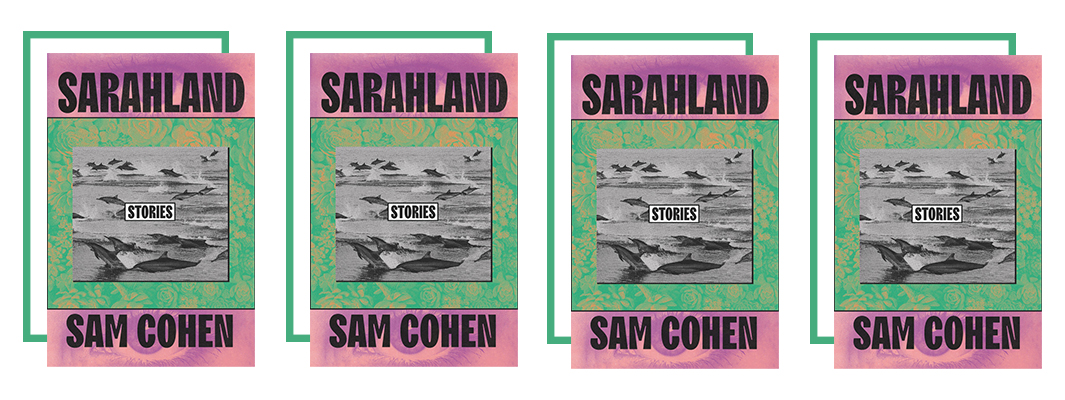
In Sam Cohen’s inventive and smart short story collection Sarahland, each story is about a different woman named Sarah. From a Jewish college student named Sarah dealing with hook-up culture and sexual assault to Sarah of the Bible, who, in Cohen’s writing, sleeps with Hagar to become the real parents of Ishmael to a Buffy-loving Sarah who writes fan-fiction to an aging lesbian Sarah who literally becomes a tree… each Sarah is told through a queer, Jewish lens, and I wish we had a million more Sarah stories.
Read if you’re into: queer Jewish stories. Also, if you know someone named Sarah (you do). Get it here.
2. The Disordered Cosmos by Chanda Prescod-Weinstein (March)
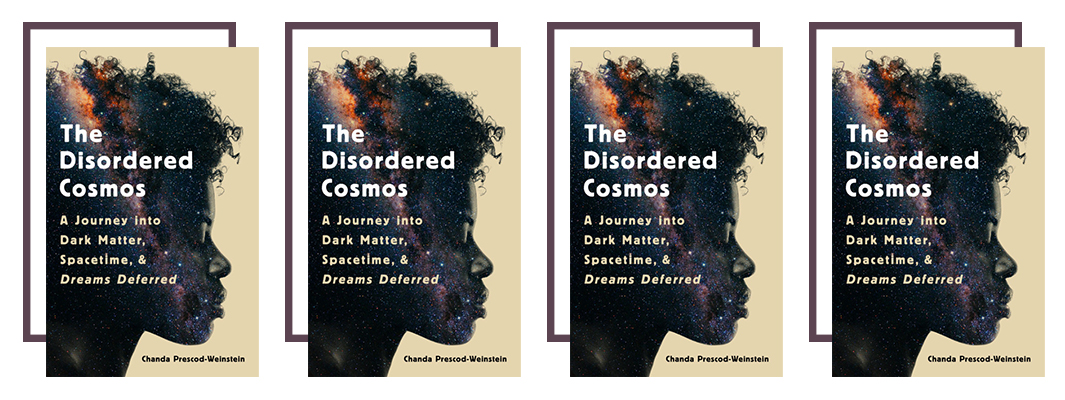
Dr. Chanda Prescod-Weinstein is a remarkable person: At age 10, she decided to become a theoretical physicist. She’s now a cosmologist and a professor at the University of New Hampshire, and her book, The Disordered Cosmos, is about her journey into science — and the innumerable challenges she’s faced. Prescod-Weinstein, a queer agender Black Jewish woman, brings her unique and necessary perspective to science, calling for a more inclusive and accessible world. The book opens and closes with a Hebrew prayers and dives into everything from explaining particle physics to why we shouldn’t use the term “dark matter” to the Maunakea protectors protesting the construction of a massive telescope at the foot of a dormant volcano in Hawai’i. Throughout, she constantly questions how science, and scientists, can be better. “To borrow a world from the Indigenous communities that my Black ancestors probably come from, I am a griot of the universe — a storyteller. And although I am the first Black woman to hold a tenure-track faculty position in theoretical cosmology, I am certainly not the first Black woman to be a griot of the universe,” she writes. And what a powerful storyteller she is.
Read if you’re into: Learning!!!! Popular science, women in STEM, Black women in science, and so, so much more. Get it here.
3. Crying in H Mart by Michelle Zauner (April)
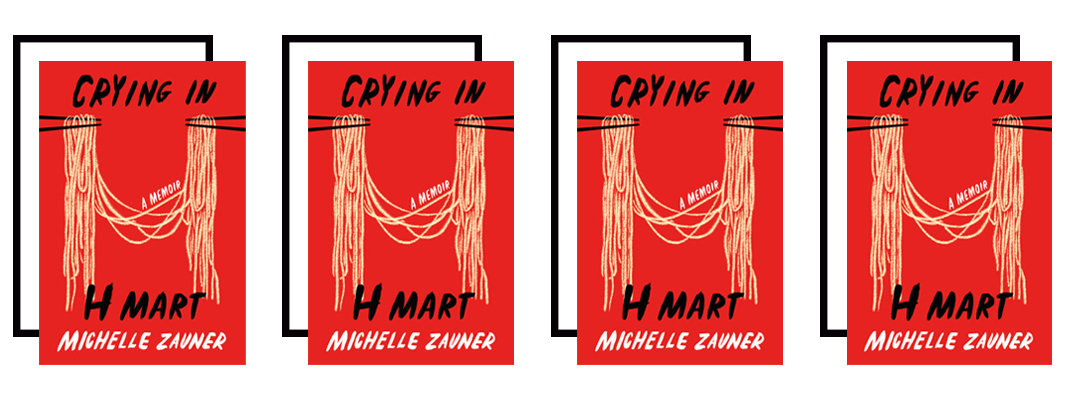
Michelle Zauner (you may know her as Japanese Breakfast, an indie rockstar) was born in Seoul, South Korea to a Korean mom and a white American dad. (She also has Jewish heritage, fun fact!) When she was 9 months old, the Zauners moved to Eugene, Oregon, and her only connection to her Korean heritage became the food her mom cooked — and their yearly trips to Korea. When her mom dies of cancer when Michelle is 25, she turns to Korean food as a way to mourn her. It’s a heart wrenching (and delicious) memoir about moms and daughters and identity and food and cancer and everything in between. You can start by reading the viral essay in The New Yorker that the book is based on.
Read if you’re into: moms, food, hyphenated identities, grief. Get it here.
4. Last Call: A True Story of Love, Lust, and Murder in Queer New York by Elon Green (March)

Here’s a riveting true-crime narrative that tells the tale of the “Last Call Killer,” a serial killer who preyed on gay men in New York in the ‘80s and ‘90s. But Last Call doesn’t just recount the grisly murders and the hunt for the killer; Jewish author Elon Green gives you a multidimensional portrait of gay New York during the AIDS crisis, the city’s queer social scene and nightlife, and the failures of policing with regard to the gay community. Green, who I discovered when he wrote on “The Enduring, Pernicious Whiteness of True Crime,” is very mindful of the failures of the genre (whose stories get told, why do we fixate on white victims, and so on), and it’s clear the care he put into telling the story of the victims and not just the murderer. A worthwhile read.
Read if you’re into: true crime, queer history, NYC history. Get it here.
5. Plunder: A Memoir of Family Property and Nazi Treasure by Menachem Kaiser (March)
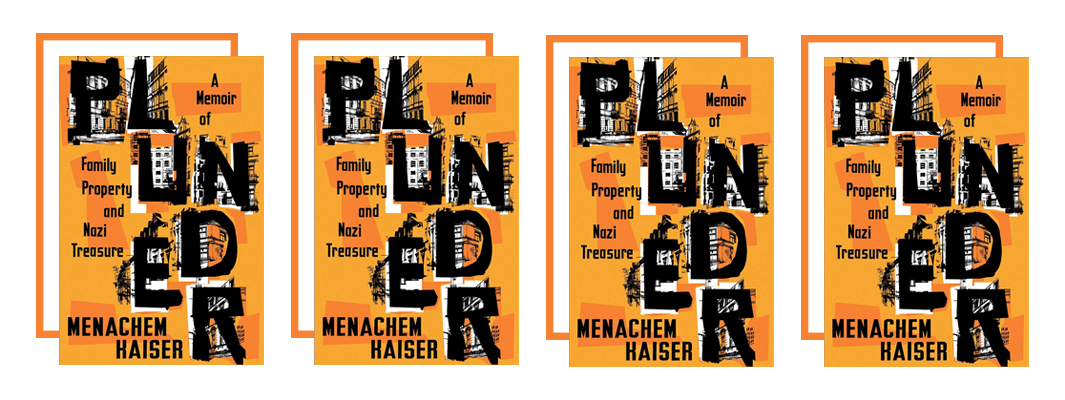
Years after his Holocaust survivor grandfather passes away, Menachem Kaiser decided to take on his mission: to reclaim their family’s apartment building in Sosnowiec, Poland. He soon enlists the help of a Polish lawyer called “the Killer” who wears tracksuits to court and her daughter, and is thrown into Polish bureaucracy to declare his relatives who died in the Holocaust as legally dead. His journey into his family history takes a turn when he learns that his grandfather’s first cousin, Abraham Kajzer, survived the war and wrote a memoir about his experience working in the camps in Riese — where Nazis supposedly hid stolen gold. In the Polish treasure hunting community, Abraham has become a kind of mythological figure, with his diary a popular read. Throughout, Kaiser grapples with questions of heritage, memory, and what it means for “treasure hunters” to be fixated on a site of mass murder. There’s no tidy ending, no satisfying conclusion, but that’s what works so well about Plunder. It focuses on the messiness of legacy, of trying to return to where your family is from only to be disappointed, and of the heartbreaking truths of Holocaust survivors. A worthwhile, and important, read.
Read if you’re into: Holocaust history, reflection on memory and heritage, memoirs. Get it here.
6. Burning Girls and Other Stories by Veronica Schanoes (March)
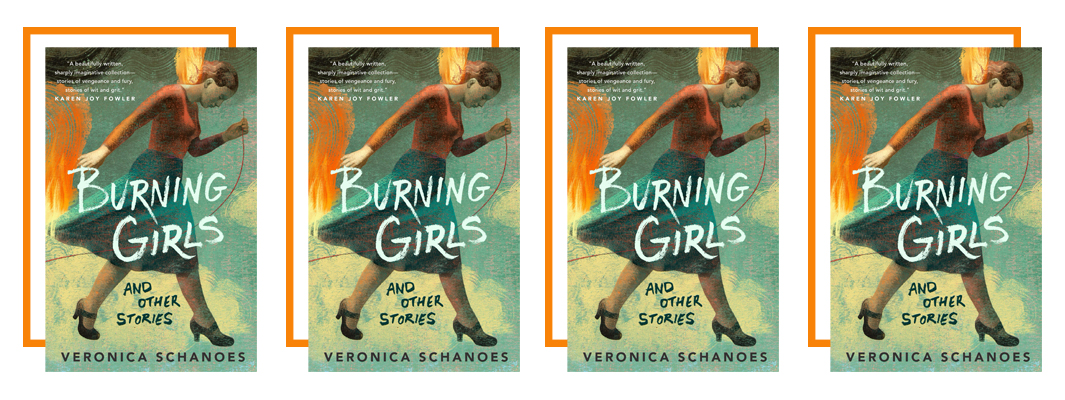
Alright, from the second I read the tagline for Burning Girls — “When we came to America, we brought anger and socialism and hunger. We also brought our demons,” — I was obsessed. Veronica Schanoes’s very Jewish stories do not disappoint. The first story, “Among the Thorns,” tells of a young girl named Esti who seeks revenge for her father’s antisemitic murder. Then there’s “Emma Goldman Takes Tea with the Baba Yaga,” which I won’t even spoil one bit for you. The titular and final story in the collection, “Burning Girls,” is the tale of Jewish immigrant sisters who flee antisemitism in their home to America, where they find jobs in a sweatshop on the Lower East Side only to find themselves in a dark fairytale. These stories are filled with Judaism and anger and Jewish myth and strong women.
Read if you’re into: Jewish women, immigrant stories, fantasy stories, etc. Get it here.
7. Spilt Milk by Courtney Zoffness (March)
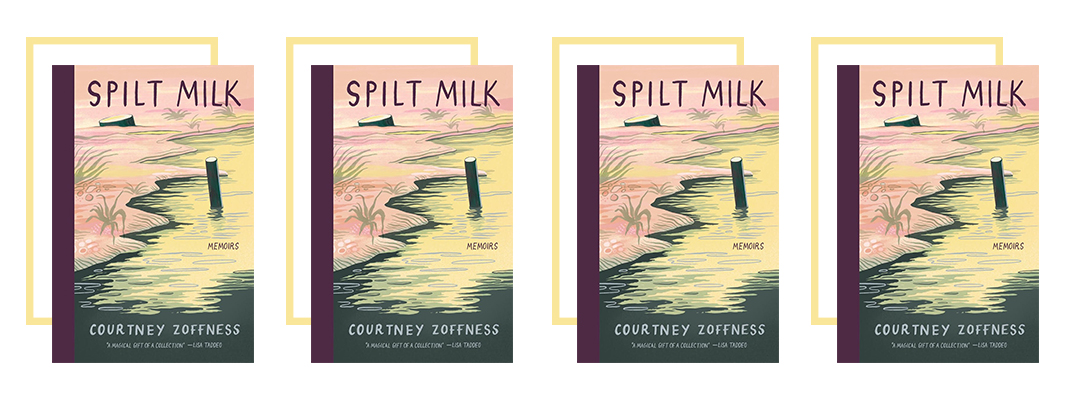
Courtney Zoffness’s memoir is a series of essays that grapple with motherhood, Jewishness, inherited trauma (and anxiety), and so much more. My favorite chapter was “Holy Body,” a chapter centered on a trip to the mikveh. Courtney goes to Boston to visit Carrie, an old camp friend who she hasn’t spoken to in years, who now runs Mayyim Hayyim, an accessible, welcoming mikveh (ritual bath). The essay is structured through her journey into the mikveh, but it’s also a reflection on her relationship with Carrie, and the fact Carrie was (at the time) carrying a baby for another couple as a surrogate. It’s a beautiful reflection on Jewishness, friendship, motherhood, what we owe to others — all wrapped up in one. Each essay is just as thoughtful and smart and well-told as the last one — don’t miss this. (If you can’t wait, you can read the titular essay, “Spilt Milk,” here.)
Read if you’re into: thinking about motherhood and Jewishness. Get it here.
8. So Many Ways to Lose: The Amazin’ True Story of the New York Mets, the Best Worst Team in Sports by Devin Gordon (March)
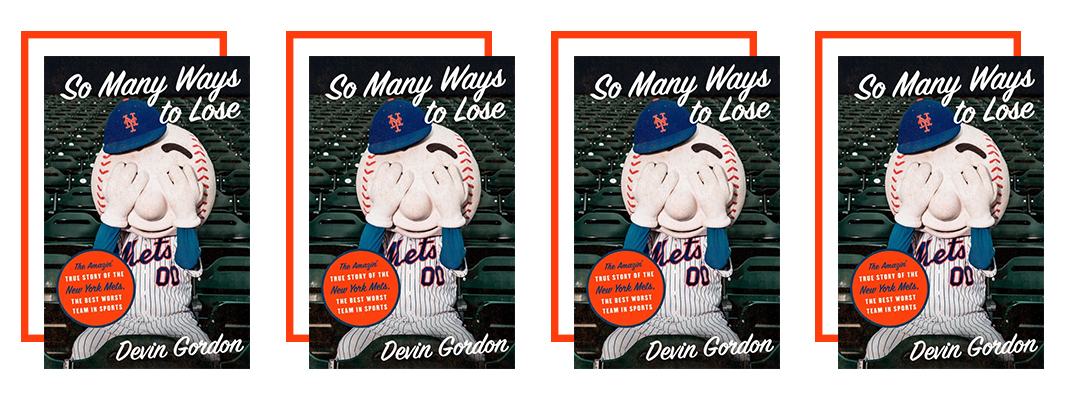
I mean, with a title like this, how could you not want to read this book? (Disclaimer: I really don’t even care for baseball! I’d much rather read about women’s soccer! I still loved this book!) So Many Ways to Lose is a comprehensive and fun look back on how the Mets are so bad, and so good at being so bad. Author Devin Gordon is a diehard Jewish Mets fan — a relatable figure for many Jewish New Yorkers. There were so many lines that made me laugh and feel the need to read out loud. (I especially loved the small bit about pitcher Bartolo Colón, leading me to this amazing YouTube clip.) In the introduction, Gordon writes, “‘Badness’ is not what defines the Mets as a franchise. There is a difference between being bad and being gifted at losing, and this distinction holds the key to understanding the true magic of the New York Mets. My Mets. Your Mets. The Mets in all of us.”
Read if you’re into: the Mets, duh. Also, baseball fans and, more generally, sports fans. Get it here.
9. Fierce Poise: Helen Frankenthaler and 1950s New York by Alexander Nemerov (March)
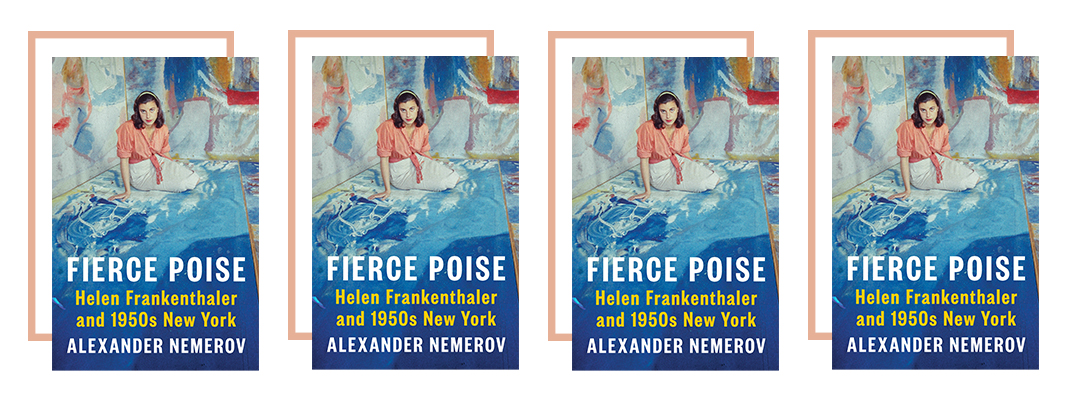
Helen Frankenthaler was an American abstract expressionist painter who began her career at age 24 with “Mountains and the Sea,” one of her most famous paintings. A Jewish woman born in New York City to a wealthy intellectual family, Helen grew up in privilege, attending the Dalton School and then Bennington College in Vermont before making her way into the art world. Post-graduate Helen is where art historian Alexander Nemerov’s biography begins: telling the story of her life, and her career, through the lens of 11 days in the ’50s. (“At the dawn of the 1950s, a promising and dedicated young painter named Helen Frankenthaler, fresh out of college, moved back home to New York City to make her name. By the decade’s end, she had succeeded in establishing herself as an important American artist of the postwar period.”) I learned so much about Helen and her contemporaries, and I loved the focus on Helen as a young woman at the start of her career. (She would go on to exhibit her work until her death in 2011.) Plus, if you desperately miss wandering in museums, this could be a good cure.
Read if you’re into: abstract art, biographies, Jewish artists. Get it here.
10. Cool for the Summer by Dahlia Adler (May)

Dahlia Adler, a Jewish author, is here with the Jewish bisexual YA love story of our dreams. Cool for the Summer is the story of Larissa (AKA Lara), who is starting her senior year of high school. The guy of her dreams, Chase, is finally into her. But then Jasmine, her summer fling who just moved into town, shows up (think Grease, but gay and way less problematic?). Jasmine and Lara spent all summer together, thinking they would never see each other again. Each of the girls feels so real and authentic to their cultural backgrounds; Jasmine is a Syrian Jew, and Lara is the Jewish daughter of a Russian mom. The tagline is: “If Larissa’s finally got the guy, why can’t she stop thinking about the girl?” Hell, yes. It’s fun, sexy, sweet, and the perfect spring read. And yes, it’s named after that Demi Lovato song (which also gets a really romantic plotline in the book).
Read if you’re into: queer YA! Jewish YA! Queer Jewish YA!! Get it here.
11. Notes from the Bathroom Line: Humor, Art, and Low-Grade Panic from 150 of the Funniest Women in Comedy edited by Amy Solomon (March)
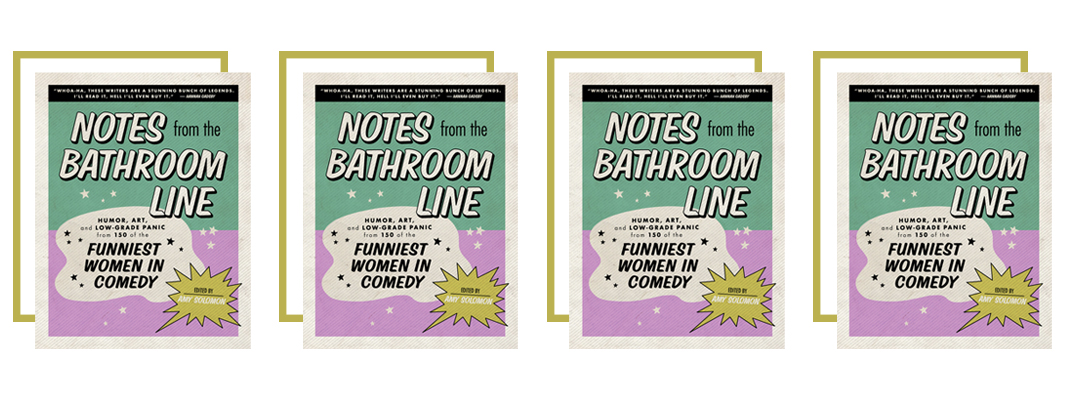
Jewish producer Amy Solomon (of Barry and Silicon Valley) has assembled an all-star line-up of female comedians to contribute to Notes from the Bathroom Line. In the introduction, Amy writes how Jewish comedian Gilda Radner was her obsession. “I grew up obsessed with Gilda Radner. As in, worship-at-a-homemade-shrine-next-to-my-bunk-bed, believe-I’m-her-reincarnated-level obsessed. My high school peers were hanging out and making out while I was hogging my family’s shared desktop computer, trolling eBay for anything Gilda-related I could get my hands on.” She eventually discovered Titters, a collection of humor by women to which Gilda contributed, published in 1972. “One of the things I loved about Titters was… it became a time capsule of sorts. It gives you such a visceral sense of its wild era, and all through humor, which I think is our most honest and illuminating lens. I felt like it was time to do that for this wild (read: bonkers, insane, terrifying) era of our own.” And so, she gathered everyone from Rachel Bloom to Cecily Strong to Beanie Feldstein to contribute to this funny, beautiful, important time capsule of our era.
Read if you’re into: women in comedy, baby! Get it here.
12. Negative Space by Lilly Dancyger (May)
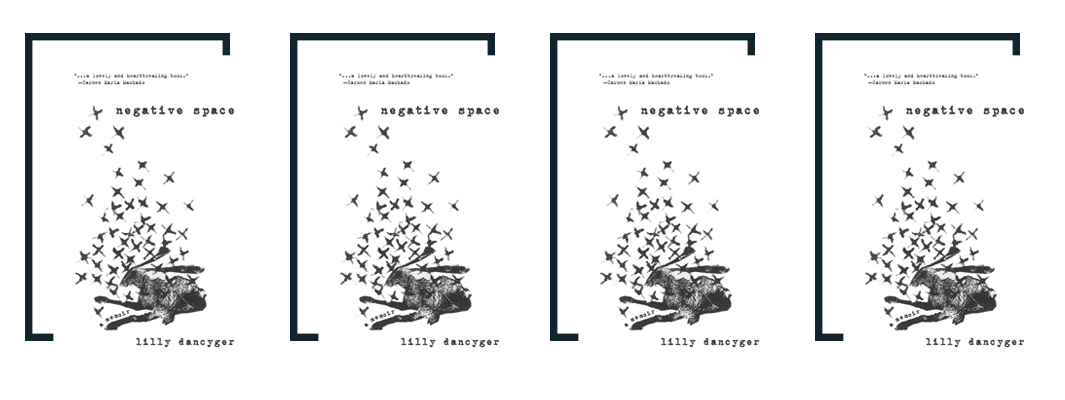
Lilly Dancyger’s memoir, Negative Space, is, at its heart, the story of her relationship with her father. From the very first line — “There’s a photograph of my father laughing the last day I saw him alive” — I was in. Her father, Joe Schactman, was a sculptor who struggled with a heroin addiction and died when Lilly was just 12 years old. It’s a powerful look at being “a fatherless woman after years as a fatherless girl,” and how grief and addiction reverberate over time. She includes images of her father’s work throughout the memoir, and I love how the visual gives you a clear understanding of the artist (her father) she’s writing about. Dancyger, a Jewish writer and editor, previously edited Burn It Down: Women Writing About Anger, and her debut memoir does not disappoint.
Read if you’re into: memoirs, stories of families impacted by addiction, Jewish stories, art. Get it here.
13. Women and Other Monsters: Building a New Mythology by Jess Zimmerman (March)
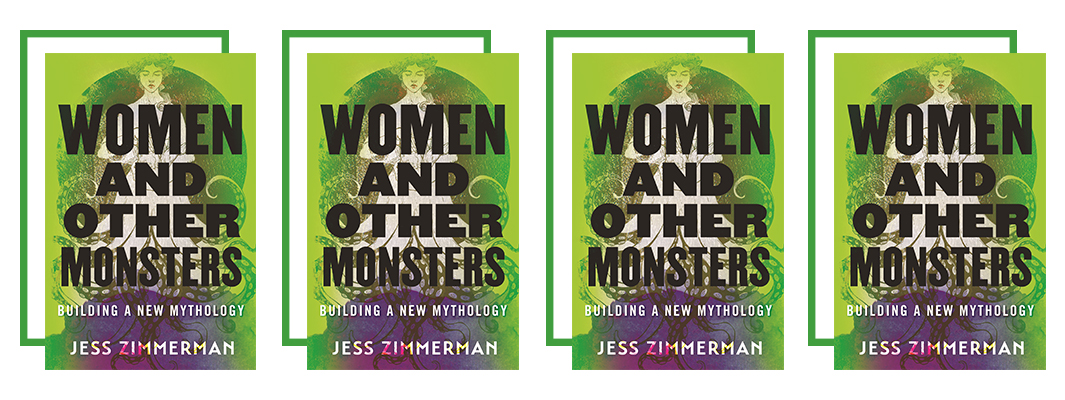
“All the stories about monstrous women, about creatures who are too gross, too angry, too devious, too grasping, too smart for their own good, are stories told by men,” writes Jess Zimmerman in the introduction to Women and Other Monsters. Growing up, Jess was a Jewish kid who loved Greek mythology, and now she seeks to understand and analyze these monstrous women in myth. “I’m not interested in elevating these myths but in analyzing them: how they function as tight little packages of expectation seeded into the culture and how they can be subverted,” she explains. Each chapter is a different female monster — from Medusa to the Furies — and it’s a radical Greek mythology for the modern age, told through a feminist Jewish lens, and I loved it.
Read if you’re into: Greek mythology nerds, this is for you. Get it here.
14. My Broken Language by Quiara Alegría Hudes (April)
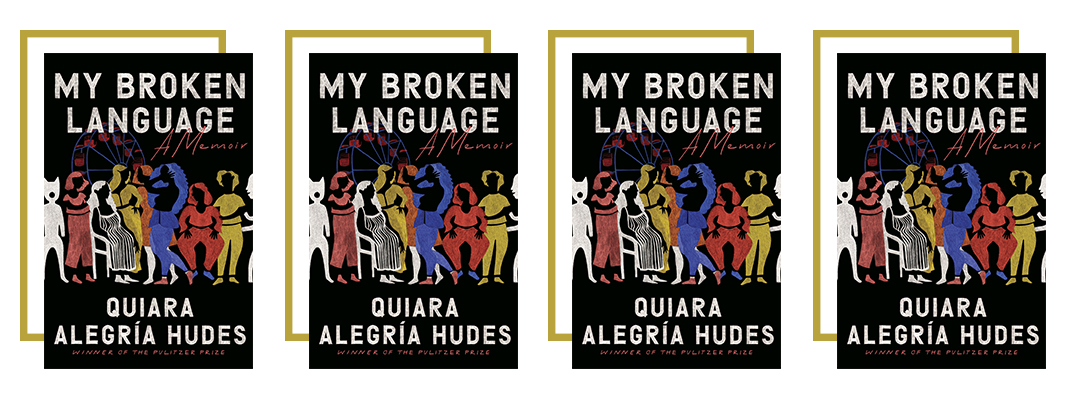
Quiara Alegría Hudes is a Pulitzer Prize-winning playwright, and her memoir is an incredible look at her journey into writing plays. Born in West Philly to a Jewish dad and a Puerto Rican Taíno mom, her parents split when she was young and she was raised by her mom and Puerto Rican stepdad, whom she calls Pop. She writes about finding her place in the world, especially as her mom gets into the practice of Santería (an African diasporic religion with roots in Cuba), figuring out what language is hers and how to tell the story of the women in her family. “My first language was English, my second Spanglish, my third Spanish, and my fourth a bookish rudimentary Santería-Lukumí.” I loved how vivid the women in Quiara’s family are in the story — particularly her mom — and how you get a real sense of the matriarchy that raised her. “You are a child of three catastrophes. You are born of three holocausts. The Native. The African. And the Jewish. You are a descendent of survivors. It’s in your blood. The resilience. The deep memory and the experience of survival. Mom had, in my youth, cornered me to whisper this incantation.” And what a story of her resilience it is.
Read if you’re into: memoirs, playwrights, coming of age stories, Latina stories. Get it here.
15. The Quiet Boy by Ben Winters (May)
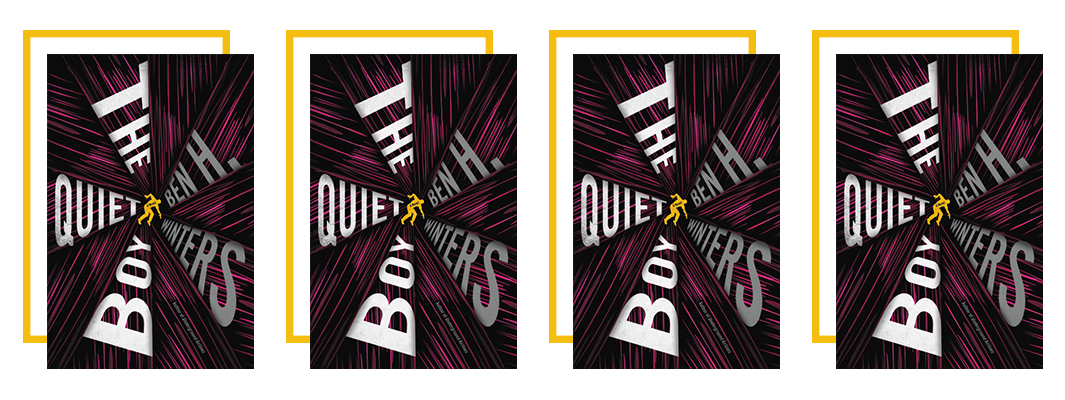
Jay Shenk is a Jewish personal injury lawyer who ropes his son, Reuben, adopted from Vietnam, into his cases. The case at the heart of the novel is of Wesley, a boy who has a traumatic head injury and wakes up from surgery to just walk in circles. The storyline is split between that case and 10 years later, when Jay pulls a reluctant Reuben to work a murder case with him. As Winters explained, “Making Jay Shenk not just a lawyer and a dad but a Jewish lawyer and a Jewish dad helped me understand him, because on some deep level I know what those things mean, how Jay might tend to see the world. It got more interesting when it came to Jay’s son Ruben, who is adopted from Vietnam and so doesn’t look Jewish, and who feels alienated from his Judaism — his friend ironically calls him ‘The Rabbi’ — just as he feels alienated from everything.” A page-turner filled with heart.
Read if you’re into: mysteries/thrillers, father/son relationships, Better Caul Saul. Get it here.
16. Why Didn’t You Just Do What You Were Told? by Jenny Diski
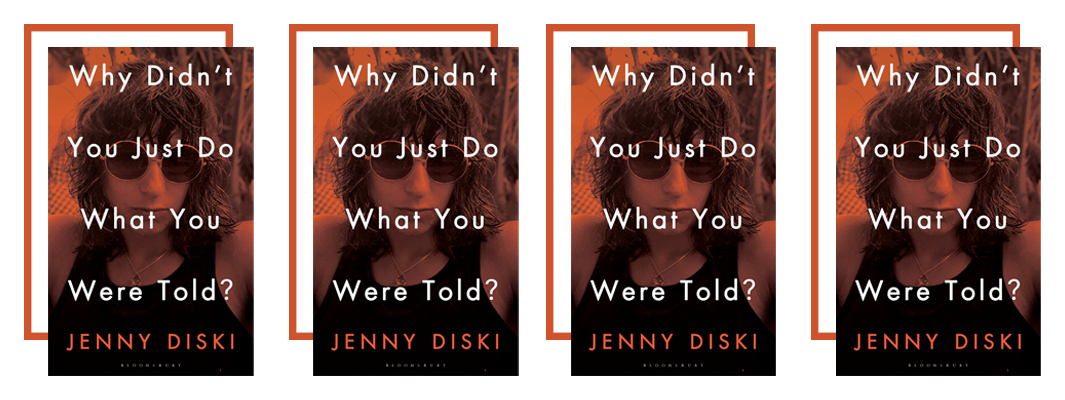
British Jewish author Jenny Diski passed away from lung cancer in 2016 at the age of 68. A prolific writer, she left behind a trove of fiction and non-fiction. London Review of Books editor and Diski’s longtime friend, Mary-Kay Wilmers, selected the essays for this posthumous publication. One of my favorites was Diski’s reflections on Anne Frank, where she writes, “I wonder if to be Jewish is to be by definition lonely in the world — not as a result of the history, but on account of the theology.” Within the essays are topics from her Jewish identity to aging to her cancer diagnosis (here’s the titular essay, that Diski wrote when she was diagnosed with cancer). It’s sad to read knowing Diski is no longer with us, but what a magnificent collection of writings she left.
Read if you’re into: essays, especially on Jewish identity. If you love a good essay, don’t miss this. Get it here.
17. Let the Record Show: A Political History of ACT UP New York, 1987-1993 by Sarah Schulman (May)
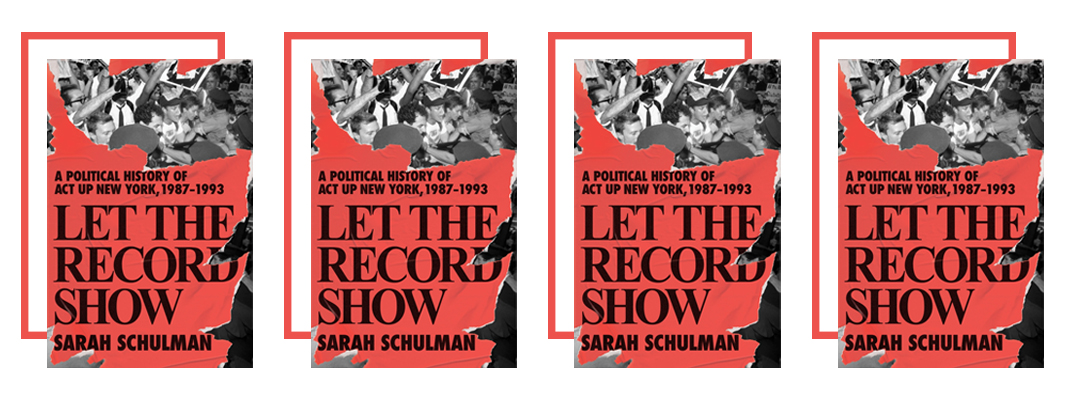
Jewish novelist, playwright historian, activist (and so many more titles) Sarah Schulman spent over two decades working on Let the Record Show, a history of ACT UP (AIDS Coalition to Unleash Power) based on 188 interviews with surviving members. ACT UP was founded in part by gay Jewish activist Larry Kramer, who passed away last year at the age of 84. I’m going to let novelist Alexander Chee sum up Let the Record Show for you: “In so many ways. Sarah Schulman has written more than an authoritative history of ACT UP NY here — it is a masterpiece of historical research and intellectual analysis that creates many windows into both a vanished world and the one that emerged from it, the one we live in now. I can’t think of a book like this — it is an almost entirely new model, uniquely possible as the result of Schulman’s life’s work.”
Read if you’re into: history, AIDS activism, oral history. Get it here.
18. A Door Behind a Door by Yelena Moskovich (May)
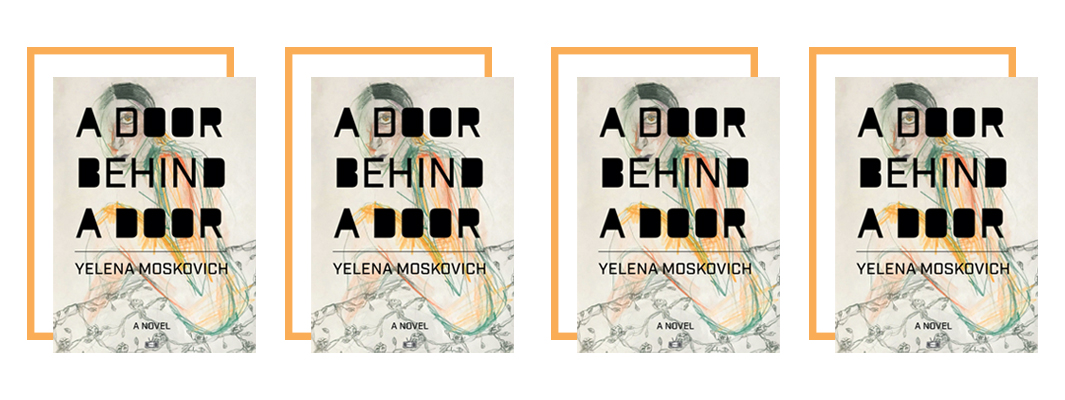
Yelena Moskovich was born in the Soviet Union and immigrated to Wisconsin with her family as Jewish refugees in 1991. Her novel A Door Behind a Door is the story of Olga, also an immigrant from the Soviet Union, who now lives with her girlfriend, Angelina, in Milwaukee. The plot is loosely about Olga as she searches for her disappeared brother, and there’s also a character named Nikolai Neschastlivyi, who grew up on the same floor in the USSR as Olga and stabbed an old woman. Each paragraph begins with an all-caps header, which is disorienting at first, but you soon get used to it. It’s like nothing I’ve ever read before!
Read if you’re into: Soviet diaspora stories, experimental fiction. Get it here (from Two Dollar Radio).
19. Justice, Justice Thou Shalt Pursue: A Life’s Work Fighting for a More Perfect Union by Ruth Bader Ginsburg & Amanda L. Tyler (March)
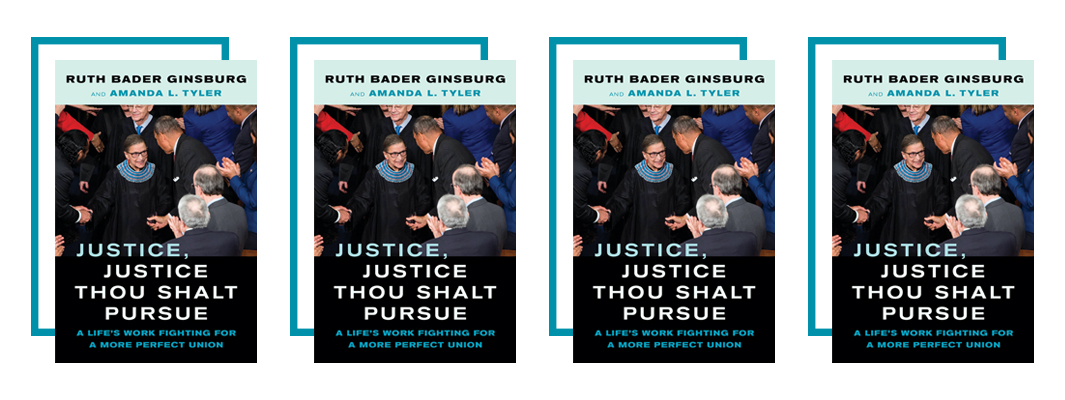
Just three weeks after Professor Amanda L. Tyler and Justice Ruth Bader Ginsburg submitted their manuscript for publication, the iconic Jewish justice died at age 87 on the first night of Rosh Hashanah. This book, with its headline from her favorite Jewish quote, tzedek tzedek tirdof, is a comprehensive look at Ginsburg’s career, through speeches she gave and dissents she wrote. It’s a collection of key RBG texts — for anyone trying to make sense of her legacy, this is where to start. In the afterward, Tyler writes, “In trying to process her loss, I keep coming back to the passage from Deuteronomy that hung on a wall in her chambers: ‘Justice, justice thou shalt pursue.’ This calling drove Justice Ginsburg in all she did. Indeed, Justice Ginsburg’s life’s work was defined by her dedication to making sure the United States Constitution leaves no one behind and truly is a document for all of us, ‘We the People.'”
Read if you’re into: Is this obvious? Ruth Bader Ginsburg. Get it here.
Books We Are Also Super Excited About Because Who Said Jews Only Want to Read Jewish Books, Y’know?
20. Love in Color: Mythical Tales from Around the World, Retold by Bolu Babalola (April)
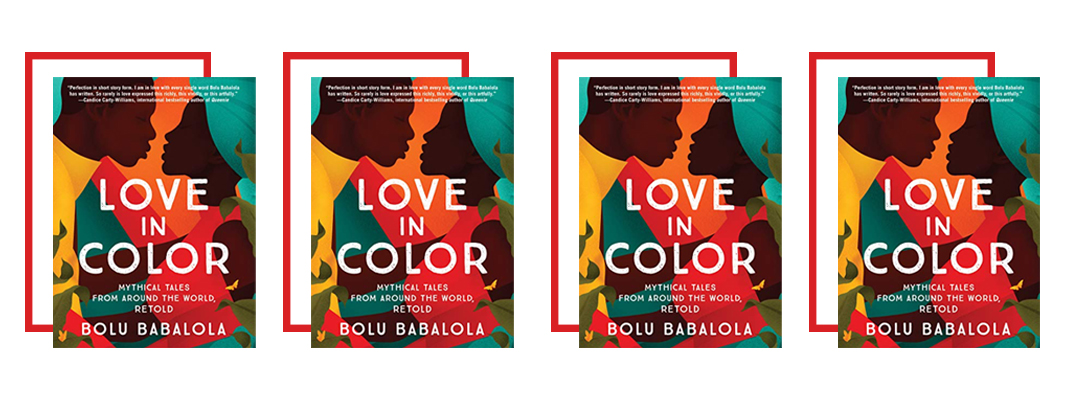
If you know me, you know there’s legitimately nothing I will read faster than a modernized adaptation of a myth. If you don’t know me: Hi, nice to meet you, I’m Emily, and I’m obsessed with myth retellings. Love in Color by Bolu Babalola is exactly this, and it delivers in a way that was so deeply satisfying I can’t wait to reread it. Found in this book are folktales and myths telling love stories from Nigeria, Ghana, Persia, Lesotho, Mesopotamia, ancient Greece, and more. Each story works wonderfully on its own — but they all magically flow together. My favorite is Nefertiti, who runs a club, the House of Aten, as a criminal queen in an organization with exclusively women. Waiting on the TV adaptation, tbh (@Hollywood, make it happen)!!
Read if you’re into: MYTH RETELLINGS, helloooOoO. Also love stories. Get it here.
21. We Are Watching Eliza Bright by A.E. Osworth (April)
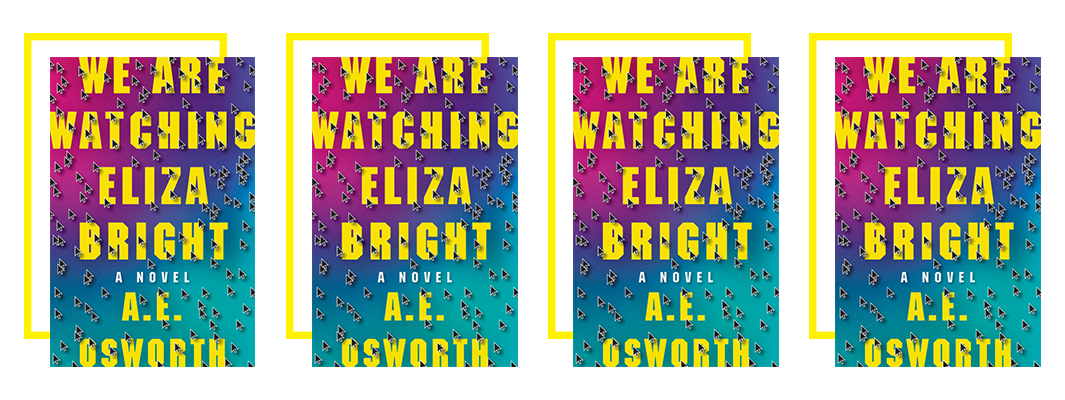
We Are Watching Eliza Bright is narrated by a chorus of angry men on the internet, lurking on 4chan, in subreddits, and on Twitter. They all play a game, run by a company called Fancy Dog Games, where a programmer named Eliza Bright works. Our story begins when Eliza files a complaint with the CEO for the sexist environment on her team, and the workplace harassment she’s dealing with — soon, she shares her story with the media and is immediately fired. Soon after, she’s doxxed and her harassment moves from virtual to real life, as a stalker begins physically threatening her. The story is told through the perspective of “we” — the angry group of men — but sometimes it switches to a different “we,” a chorus made up of a community of queer people called the Sixsterhood. I won’t give too much more away, but the structure of the novel is so inventive and creative. A. E. Osworth’s debut speaks to the dangers of radicalization of white men on the internet — but also how it can be a place for queer people and others to find community and solidarity. A modern, feminist thriller about the dangers of the internet.
Read if you’re into: thinking about the Internet, #GamerGate, toxic misogyny online and in real life. Also well-paced thrillers. Get it here.
22. Popisho by Leone Ross (April)

In a magical island in the Caribbean called Popisho, descendants of former enslaved people live alongside members of the Indigenous population. On Popisho, everyone is born with “cors,” a special magic power. It could be the ability to detect a lie — or a third arm. We follow several characters: Xavier, a chef who was chosen by the gods and is grieving on the one-year anniversary of his wife’s suicide; Anise, a healer who discovers her husband is cheating on her after she’s suffered multiple miscarriages; and Sonteine & Romanza, the twin children of the corrupt governor — Sonteine is due to get married, whereas Romanza ran away many years earlier because he is gay. While the story is full of magical realism, at its core, it’s the tale of people just trying to live and love, and of an island trying to shake off corruption. I simply loved sinking into this epic read.
Read if you’re into: magical realism, epic stories that take place in one day. Get it here.
23. Open Water by Caleb Azumah Nelson (April)
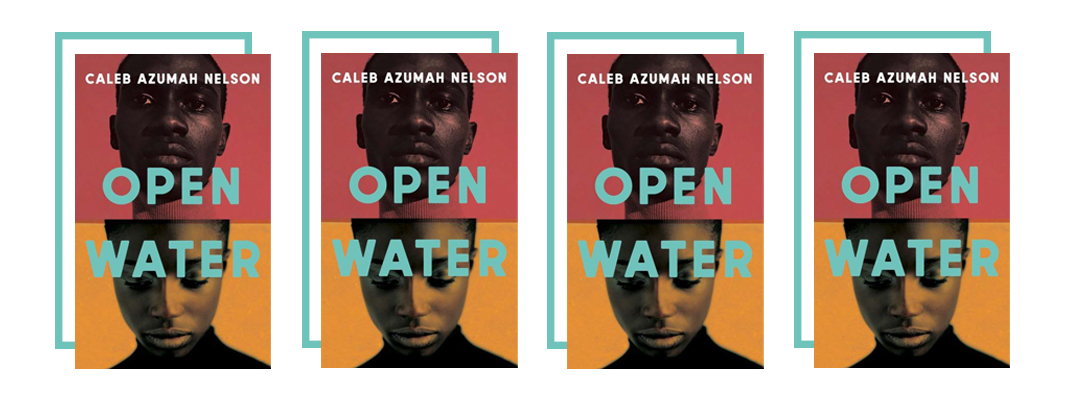
Open Water is the story of two young Black British artists who fall in love. It’s narrated in second person — the “you” is the young man, a photographer and writer, who falls for a dancer. I have to admit it took some getting used to, and second person narration is undeniably hard to pull of, but Nelson does. The key tension is the lingering trauma the narrator has from racist interactions with the police — when they’ve pulled him over for just driving while Black, or stopped him at night because he matches the “profile” of a robber. Yet when the woman, his love, asks him to open up, he freezes. In the slim novel, Nelson expertly weaves in art and music and the lives of Black Britons as he tells this love story. (I need a playlist of all the songs mentioned!) His prose is very lyrical and moving, telling with tenderness a story of Blackness and masculinity and vulnerability. I loved this line from the jacket: “At once an achingly beautiful love story and a potent insight into race and masculinity, Open Water asks what it means to be a person in a world that sees you only as a Black body, to be vulnerable when you are only respected for strength, to find safety in love, only to lose it.”
Read if you’re into: love stories, lyrical prose, London. Get it here.
24. My Heart by Semezdín Mehmedinović (translated by Celia Hawkesworth) (March)
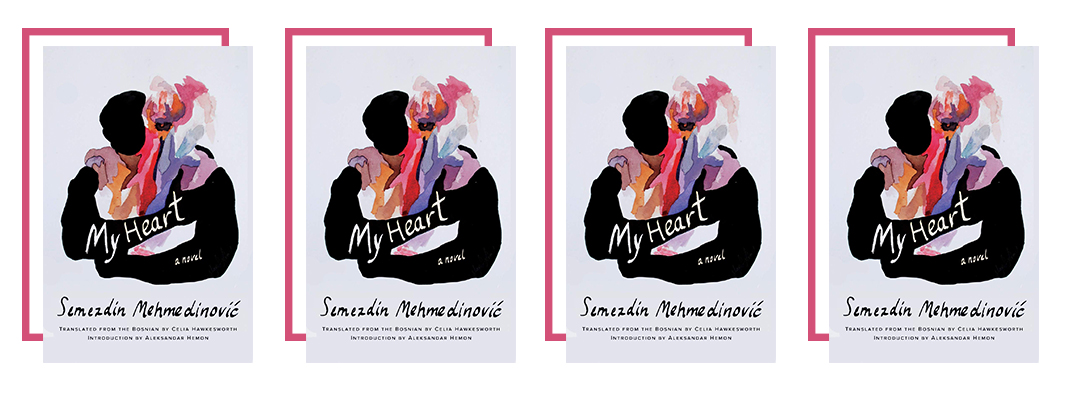
Semezdín Mehmedinović is a well-known Bosnian writer, and My Heart, translated from Bosnian into English, is an autofiction novel — based on Semezdín’s life in America after he left Saravejo following the Bosnian War. The story begins when the writer has a heart attack, but my favorite part — and the most emotionally powerful chapter — is when he writes of caring for his wife after her stroke, and how she lost so much of her memory. It’s a moving meditation on trauma, grief, love, and what it means to mourn for people who are still alive and places that still exist, but not as they once were. I loved Israeli writer Etgar Keret’s blurb: “Intelligent, honest, and full of heart, Mehmedinović’s novel has all the qualities one might seek in a friend. Like a friend, it is honest enough to tell you even the harshest of truths, and, like a true friend, it ensures that you will never feel alone while you read it, even in its most heartbreaking moments.“
Read if you’re into: stories of trauma and love, immigrant/refugee stories. Get it here.
25. Caul Baby by Morgan Jerkins (April)
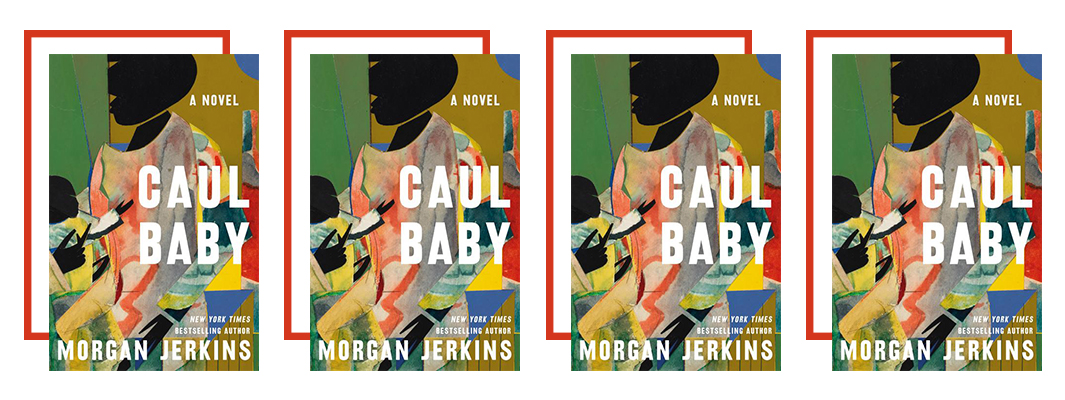
Morgan Jerkins’ Caul Baby is a magical realist tale of Black motherhood set in Harlem. The story centers on the Melancons, an old Harlem family known for their caul, a layer of skin they can cut off and give to people that has healing powers. Laila, a woman suffering miscarriages, turns to them in desperation when her pregnancy finally makes it past the first trimester. However, her deal for caul falls through — and her baby is stillborn. Devastated by grief, Laila retreats from the world. What she doesn’t know is that her 16-year-old niece, Amara, is pregnant and doesn’t want the child — so Amara gives the baby, who is born with a caul, to a family that turns about to be the Melancons. We follow the child, Hallow, as she grows up and learns the horrors of selling skin, and Amara as she works to get revenge for her aunt. A captivating story on the bonds between mothers and daughters and a powerful meditation on secrets, gentrification, family legacy, and more. A must-read.
Read if you’re into: magical realism, families with secrets, stories of Black motherhood. Get it here.
26. The Performance by Claire Thomas (March)
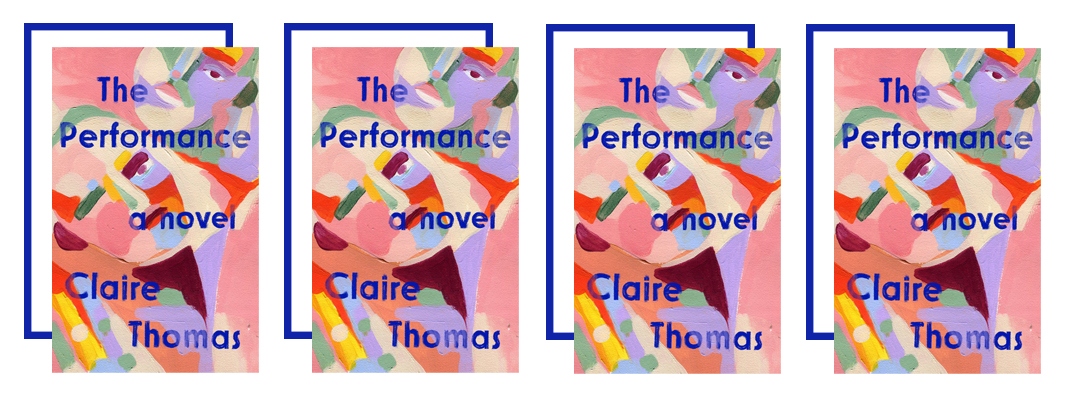
The Performance is a story of three Australian women who see a play — and the revelations from the night that change the path of their lives. There’s Margot, a successful professor being pressured to retire; Ivy, a 40-something philanthropist and new mom; and Summer, a 20-year-old usher and drama student. They each have their own narrative as they watch the play — it unfolds through each of their eyes — and the intermission is written as a play where the three finally interact. A moving, intimate novel looking at the lives of women and what we perform everyday.
Read if you’re into: theater!! But also, stories where seemingly unconnected stories connect. Also, women. Get it here.
27. The Seed Keeper by Diane Wilson (March)

The Seed Keeper is the story of a Dakhóta woman, Rosalie Iron Wing, who is placed in foster care when her dad dies at age 12. At 18, she marries a white farmer to escape her foster home. The book is mainly when Rosalie is older, after the death of her husband, when she returns to the cabin where she grew up in an attempt to understand her connection to the land and her people. There are a few chapters from the perspective of Rosalie’s friend, Gaby, an Indigenous activist, and a few that flash back in time to Rosalie’s ancestors in the 1800s. It’s a powerful story recounting the attempted genocide of Indigenous people in America — and how they continue to survive.
Read if you’re into: multi-generational stories, the environment, Indigenous American stories. Get it here.
28. How Beautiful We Were by Imbolo Mbue (March)
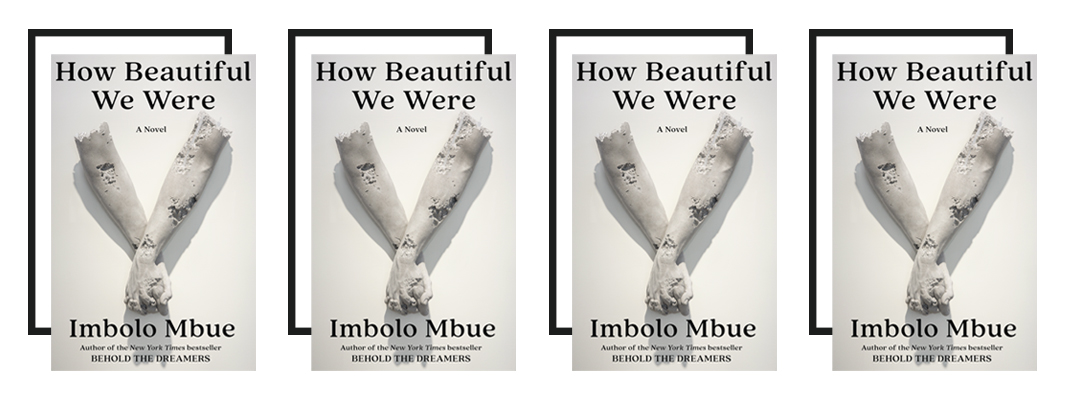
Imbolo Mbue, author of Behold the Dreamers, is back — this time, she has set her story in the fictional African village of Kosawa, where the villagers are dealing with the toxic impacts of a nearby American oil company. The company promises financial reparations and clean-up — but fails to deliver. The government, corrupt and led by a dictator, doesn’t care. So, the people of Kosawa try to fight back. I loved the narrative style: it’s told in first-person plural, from the perspective of the generation of children in Kosawa who grow up dealing with this legacy of environmental destruction and colonialism, and centers on one young girl named Thula who becomes a revolutionary. Mbue, raised in Limbe, Cameroon, draws on her own childhood growing up near an oil refinery for the story. “It was an incredibly difficult book to write, because it’s very personal. How can the degradation of the environment for the sake of profit not be personal?” she explained. “I would think to myself, why do some people rise up and fight while others do nothing? Are people justified in doing anything and everything possible for the sake of justice? How do we balance our desire to fight for change against our desire to protect the ones we love? These are questions the characters have to deal with. I do not have answers — I much prefer to ask questions.”
Read if you’re into: unputdownable stories, critiques of capitalism/colonialism/environmental racism. Get it here.
29. White Magic by Elissa Washuta (April)
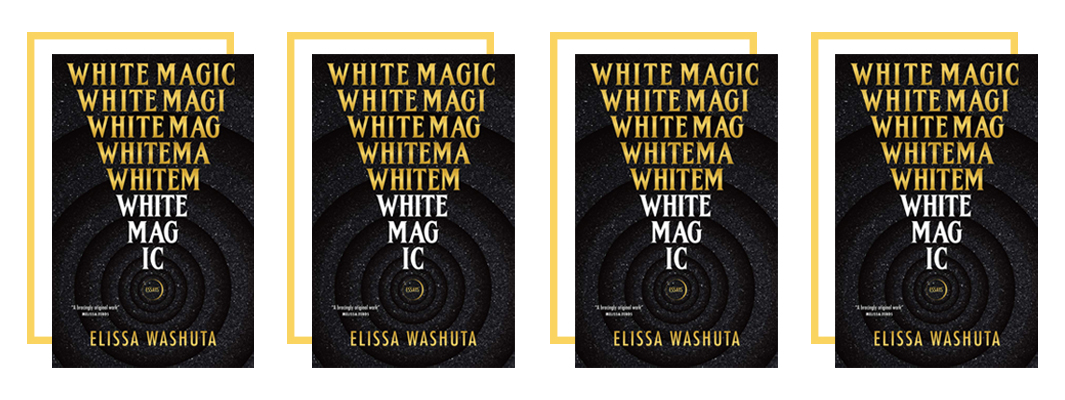
Elissa Washuta’s essay collection, White Magic, is remarkable. A series of intertwined pieces on being Indigenous in America, sobriety, heartbreak, colonization, being a witch, and so much more, Washuta dives into her past — and America’s past — to craft a tale of what it means to live as an Indigenous woman today. My personal favorite essay was “Centerless Universe,” which is structured around Washuta’s time as a writer-in-residence at the Fremont Bridge in Seattle during the summer of 2016. Her application was to write about a’yahos, shape-shifting serpent spirits in the Duwamish people’s tradition, and how the non-Native settlement on the shores of Lake Washington drove them away. Yet what results in this essay is an incisive and beautifully written story of Seattle, of development in America on the wreckage of Native communities, and of her own history in the place. Each essay is just as skillful at interweaving the personal and the historical — and on the whole, the collection was, well, magic.
Read if you’re into: personal essays!!! Also if you love epigraphs and the thought that goes into them (random, I know), you will be obsessed with this. Get it here.
30. The Kingdoms by Natasha Pulley (May)

It’s 1898 and there’s a man named Joe, who lives in London, which is, in this historical timeline, a part of the French Empire. In this history, Britain lost the Napoleonic Wars. Joe has gotten off a train from Scotland and cannot remember anything about who he is or where he’s from. He is claimed by his wife — they are British slaves in the Empire. He returns to his work, still unable to remember anything. After a few years, he is sent to repair a lighthouse in Eilean Mor in the Outer Hebrides. Soon he finds himself a century earlier, on a British boat with a mysterious captain, fighting the French and hoping for a future that is different than the one he came from. Still with me? Natasha Pulley’s The Kingdoms is an intricate plot, for sure, but you get swept up in the narrative. I appreciated how this time travel story deals with shifting futures, when little actions have big impacts. Anyway, I am going to tie myself in knots trying to explain this plot further, but if this sounds like the type of book you’re drawn to — epic! time travel! history! — you know who you are.
Read if you’re into: time travel, queer love, historical fiction, alternative history. Get it here.
31. Peaces by Helen Oyeyemi (April)
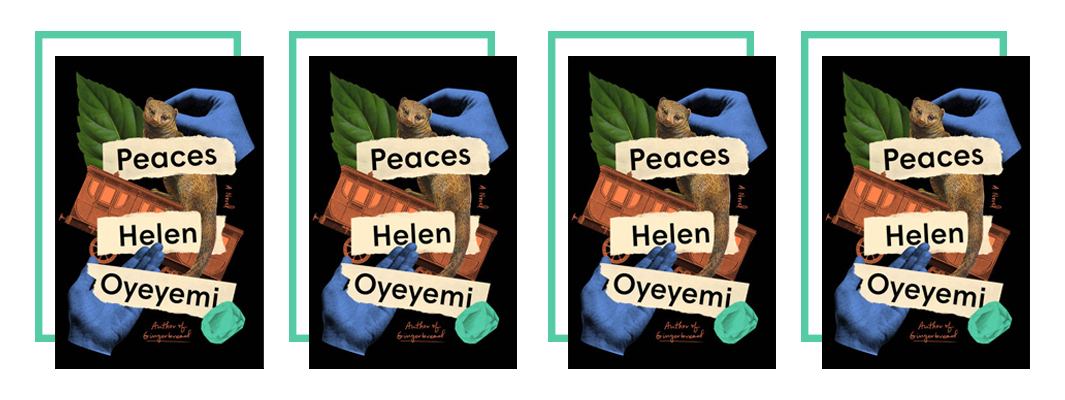
This is maybe the weirdest book on the list, but in the best way possible. Peaces is the story of Otto and Xavier, a couple who are gifted a honeymoon (though they didn’t technically get married) on a mysterious former tea-smuggling train by Xavier’s aunt. They go with their pet mongoose, Árápad, and are soon trying to figure out what is happening on the train. It’s a well-plotted, deliciously weird story that almost reads like a horror book at points — why is there furniture on the ceiling of the train? Who is Ava Kapoor, the woman who lives on the train? Were are they going? Who is a man named Přemysl, and what does he have to do with all of them? — and I couldn’t get enough. Also, I just loved this line from the description: “Peaces is about what it means to be seen by another person — whether it’s your lover or a stranger on a train — and what happens when things you thought were firmly in the past turn out to be right beside you.”
Read if you’re into: Helen Oyeyemi!!! Also, love stories, mysterious trains, creeping tension, etc. Get it here.
32. The Windsor Knot by SJ Bennett (March)
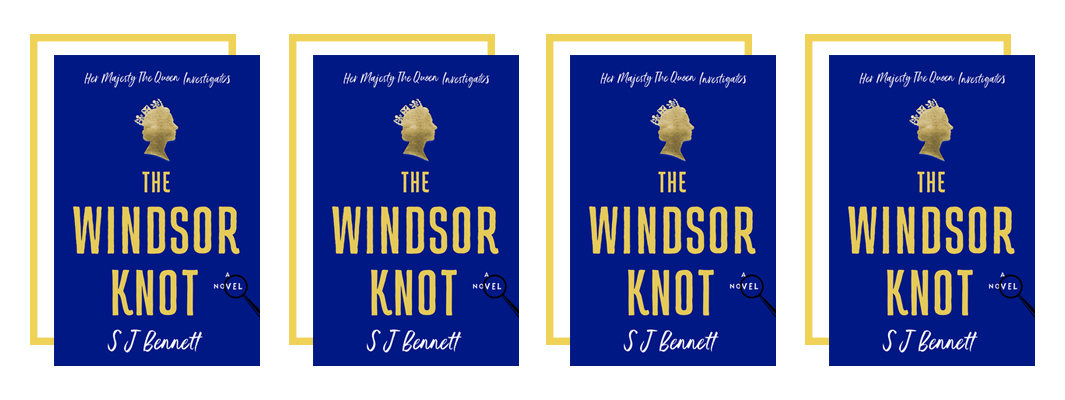
Sometimes (all the times?) you just need to escape and imagine a world where the Queen of England solves murder mysteries. That time is now: The Windsor Knot is just a lot of fun. Set in spring 2016 (pre-Meghan Markle, sadly), the Queen is hosting a party at Windsor Castle. The next morning, a young Russian pianist is found dead in his room. At first glance, it seems to be a suicide — but soon it is clear that he was murdered. Was it a sleeper agent inside the castle? Another Russian? Full of twists and turns, I’ll say it again: genuinely a lot of fun.
Read if you’re into: the British royal family, mysteries. Get it here.
33. Gold Diggers by Sanjena Sathian (April)
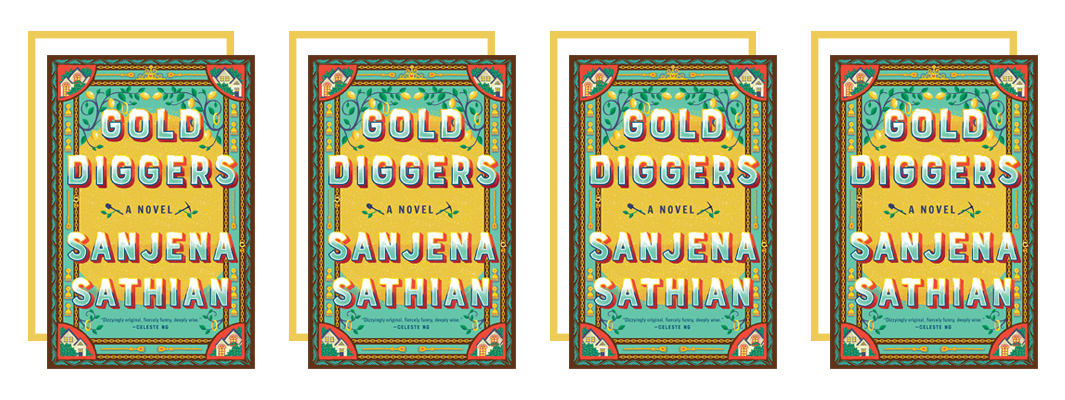
Neil Narayan and Anita Dayal grow up across the street from each other in the Atlanta suburbs in the early 2000s. Anita and her mom, Anjali, have been brewing an ancient alchemical potion from stolen gold — growing up in Bombay, Anjali’s mom used the potion on her sons, not her. But Anjali uses the potion on Anita — and Neil gets involved, to disastrous consequences. I’m not going to spoil you any much more, because it’s best going into Gold Diggers not knowing much about the plot. Also, Mindy Kaling just announced she’ll be adapting the book into a TV show, so if you’re the type of person who loves reading a book before seeing the show: You should read this now!
Read if you’re into: satire, stories of second-generation Americans, magical realism, and heists!!! Get it here.
34. Of Women and Salt by Gabriela Garcia (March)

At its heart, Gabriela Garcia’s Of Women and Salt is the story of five generations of Cuban women, though it really is focused on one: Jeanette, recovering from substance abuse and trying to seek out her roots in Cuba. Jeanette wants to learn more about her family history, but her mother, Carmen, is unwilling to open up. So, Jeanette decides to go to Cuba, where she meets her grandmother and cousin for the first time. There is also the plot of Jeanette’s Salvadoran neighbor, who is deported by ICE with her daughter. The women in this book feel very real, and their stories are so vivid — I just wanted more!
Read if you’re into: family sagas, multi-generational stories, matriarchies. Get it here.
Disclosure: This post contains affiliate links, which means we may receive a commission if you click a link and purchase something that we have linked to. While clicking these links won’t cost you any extra money, they will help us keep this site up and running. Thanks!
